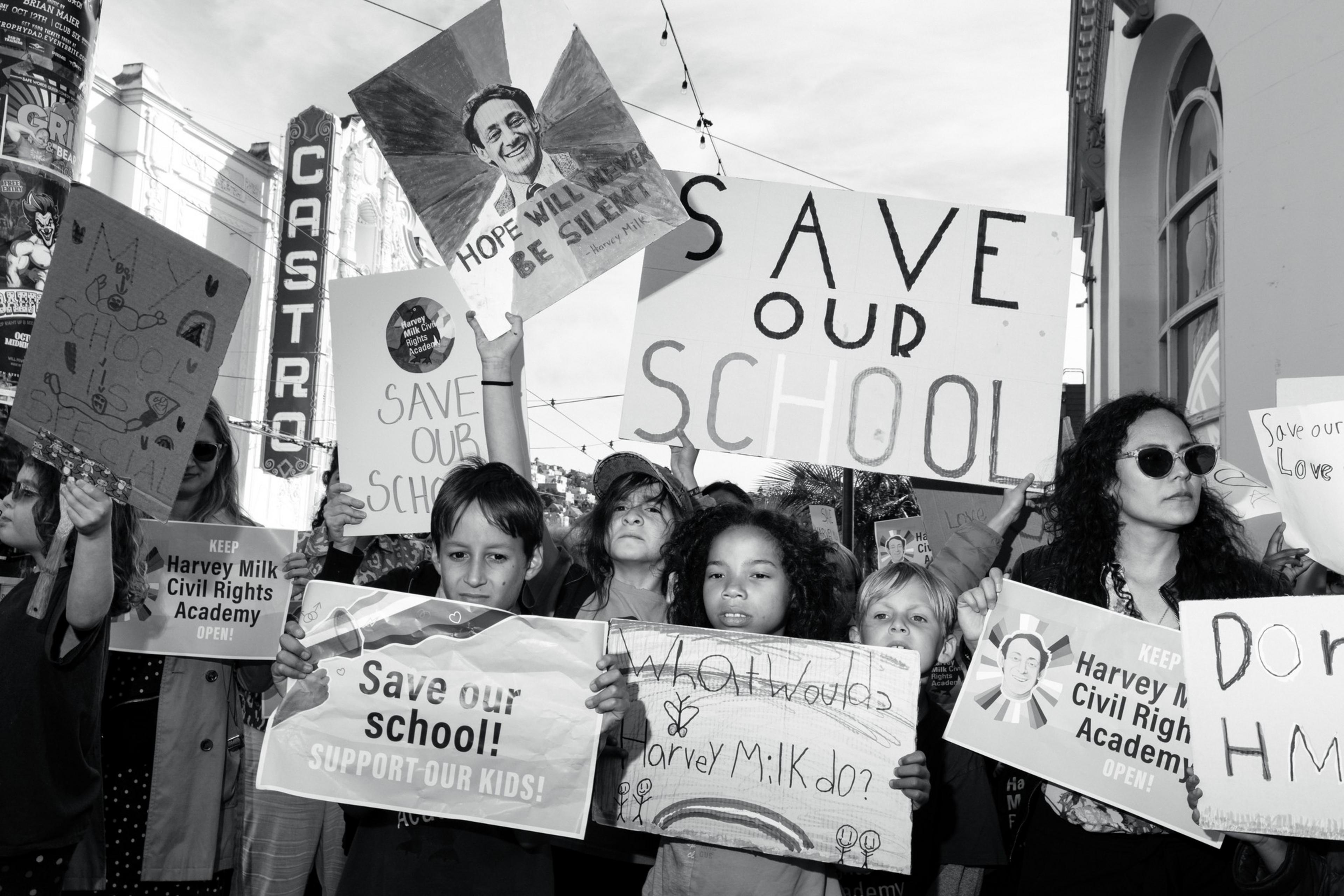After dropping off my daughter at Marshall Elementary one day last year, I stood with another parent, both of us fretting over rumors that our 245-student school might be on the San Francisco Unified School District’s kill list. For me and other Marshall parents, the school’s sense of safety and community seemed irreplaceable. The idea of losing it was hard to accept.
San Francisco public schools, like those in many cities, face declining enrollment. (opens in new tab) Families are moving away, choosing private schools, or simply having fewer children. Chicago, New York, and Los Angeles are dealing with the same issues. But here, the problems have reached a point of no return, with the state poised to take over the district. SFUSD has 14,000 empty seats, and 4,600 more are projected by 2032. But even half-empty schools need principals, teachers, and other staff.
When schools aren’t fully enrolled, they aren’t fully resourced. As most local experts and lawmakers agree, closing or merging schools is painful medicine that will allow for better-staffed environments where all students can thrive. Right now, we’re spreading limited funding across too many campuses (opens in new tab), leaving many kids without the education they deserve.
I know it’s personal when your own school is at risk. My daughter is thriving at Marshall, a small community school where she receives the academic attention she struggled to find in private school. But when my younger son enrolls in kindergarten, he will need special education, and Marshall doesn’t have those resources. Nearby Flynn Elementary, with a larger student body, does. What if the schools merged and shared critical services? Wouldn’t that benefit more students?
When the district announced its closure list last week, I was surprised that Marshall had been spared. I had begun imagining the benefits of merging with a larger school, like combining PTA budgets. Sparing so many small schools, like Marshall, feels like avoiding hard decisions rather than addressing the root issue: ensuring that every child has access to a fully enrolled, fully resourced school.
This week, Mayor London Breed came out against the district’s plan to close or merge 13 schools. She was clearly responding to widespread discontent among families over the execution of these plans. I understand the misgivings; I, too, worried about how my daughter would fare in a bigger school. But I’m afraid the mayor and other critics of the closures have it all wrong.
The truth is that small, privileged schools like San Francisco Public Montessori (opens in new tab)and Harvey Milk Civil Rights Academy dominate the conversation about mergers, with parents citing logistical concerns or deeper anxieties about integrating with facilities that serve English learners. These responses reveal a tension between preserving privilege and the responsibility to build an equitable public education system.
Take Harvey Milk. With 133 students, it’s far below the district’s closure threshold. Sanchez Elementary, just half a mile away, has the capacity to absorb Milk’s students. Merging those two schools could consolidate teachers and other staff, meaning more oversight of each student.
What’s more, mergers have been shown to work. In Denver (opens in new tab) and Chicago (opens in new tab), consolidating schools has reinvested funds into essential programs like mental health support and smaller class sizes. The same could happen in San Francisco, if we’re willing to see mergers as our civic duty.
Instead of resisting this effort, as the mayor is apparently doing, we should ask how we can support mergers. Public education is a collective project, and we owe it to our children and communities to embrace diversity in all its forms — including socioeconomic.
We can keep pushing the district to “save our school,” but if the closures are halted, then what? The problems of declining enrollment and yawning deficits will remain. The alternative is that we get to work. We can advocate for our newly merged communities and hold the district accountable to its promise: fully enrolled, fully resourced schools for every child.
Catharine Burhenne is a marketing executive and tech founder. She lives in the Mission and is the parent of an SFUSD first-grader.
